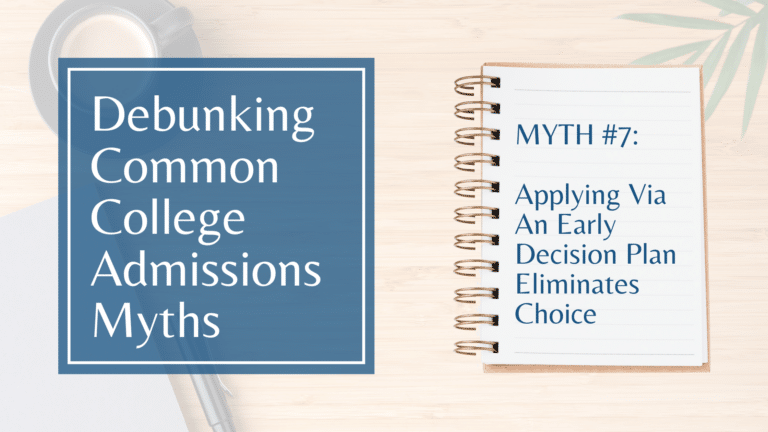Join Our Email List
Get the latest admissions tips and
announcements right in your inbox!
announcements right in your inbox!
We respect your privacy. Unsubscribe at any time.

Early Decision (ED) is a binding decision plan through which a student applies relatively early in the application cycle (usually by November 1) and agrees to enroll and withdraw all other applications if admitted. The only “out” from this agreement is if a student receives insufficient need-based financial aid. Students may apply ED to only one university at a time, though they may be permitted to apply to other colleges under non-binding plans while their ED application is pending. Some universities offer a second round of Early Decision (ED2), which carries a later application deadline (typically around January 1).
Many students eschew ED plans because they don’t want to “limit their options” or they’re unsure if they have a single “dream school.” This reluctance is understandable—it seems scary to pick one top-choice school so early in a student’s final year of high school. What students often fail to realize, however, is that they are potentially limiting their options by forgoing the benefits offered by Early Decision plans. Although ED is a binding commitment, it does not limit choice or require finding that “perfect” school (which does not exist). It is a tool that colleges use to manage their enrollments and one that savvy applicants can use to optimize their outcomes.
Early Decision provides a significant admissions advantage. Given ED’s binding nature, colleges know admitted ED students will enroll, which allows them to protect their yield (the percentage of admitted students who enroll). Therefore, ED rates tend to be significantly higher than those of the Regular Decision (RD) rounds. Vanderbilt’s Class of 2027, for example, had an ED admit rate of 15.7%, as compared to an RD admit rate of 4.2%. At Dartmouth College, the ED admit rate for the Class of 2027 was 19% while the RD admit rate was 4%. For the Class of 2026, Tulane University’s ED admit rate was 67% while its RD admit rate was just 8.4%. And, the University of Miami admitted 56.7% of ED applicants to its Class of 2026 and just 19% of RD applicants.
The disparity in admit rates between ED and RD is slightly skewed by the fact that student-athletes, who receive pre-allotted spots, often apply ED. Nevertheless, ED still provides a significant advantage. Many universities fill 50% or more of their incoming first-year classes with Early Decision applicants, leaving RD applicants to vie for roughly the same number of spots (or fewer) in a much larger pool. Of course, ED is not a magic bullet: a student must be qualified in order to be admitted, regardless of decision plan. However, applying ED makes it easier to stand out amongst a smaller number of qualified applicants.
While Early Decision plans do accelerate the college decision-making process, they do not eliminate optionality. Students make choices throughout the application process, from choosing where to apply to eventually selecting one school in which to enroll. When students choose to apply under an Early Decision plan, they are making an active choice, selecting that institution from countless options. The reality is that every student must narrow down the choices to a single institution—students who are admitted via ED plans simply make that choice in October as opposed to April of their senior year.
By moving up the timeline to take advantage of Early Decision plans, students are potentially expanding the number of available options by increasing their odds of admission to any given university. Being admitted under an ED plan does not negate the fact that the student made a choice to apply in the first place and merely means that the student “has” to attend a top-choice university. If students are not admitted ED, they can be assured that they optimized their admissions chances at that school and move on to other, equally exciting options.
ED is not a good option for every student or situation. Many students are aiming for schools that do not offer ED and do not want to potentially forgo the opportunity to attend their top choice school if admitted elsewhere under an ED plan. Some students may not feel ready to make a binding commitment while others may need to compare merit- and need-based aid packages. While ED is not for everyone, the notion that it eliminates choice is not entirely accurate.
